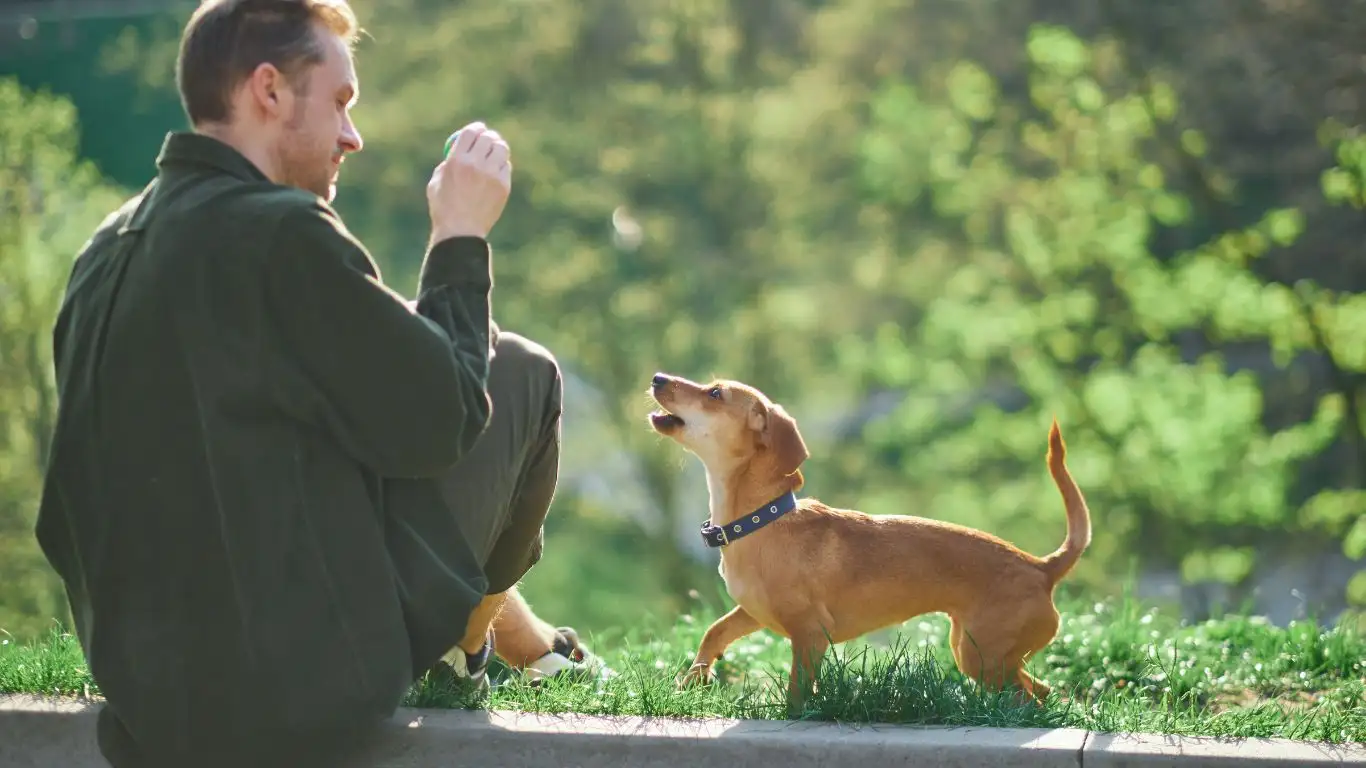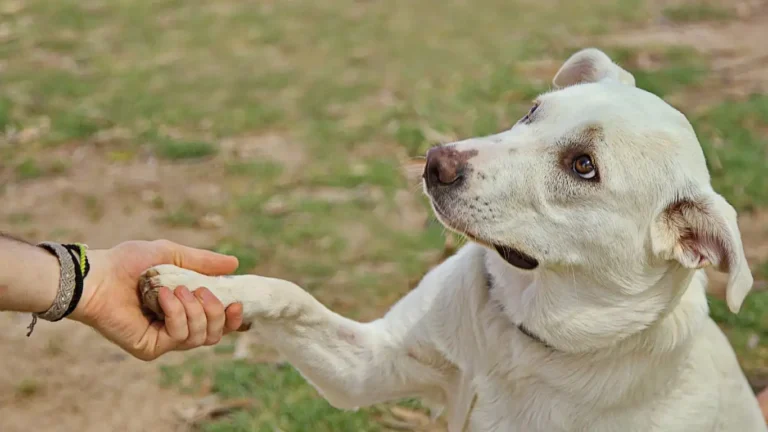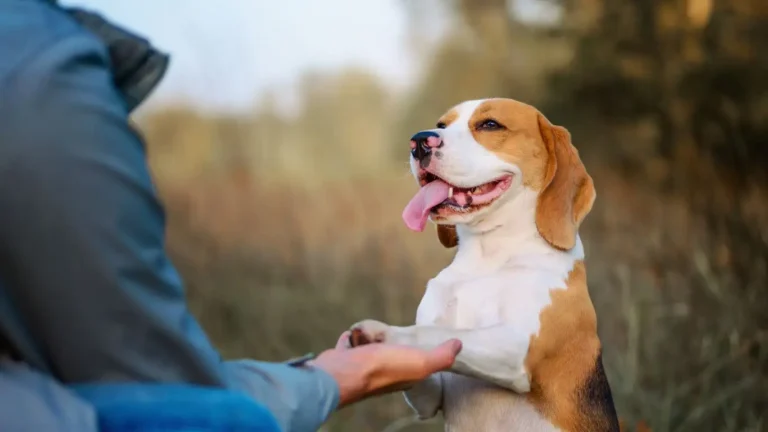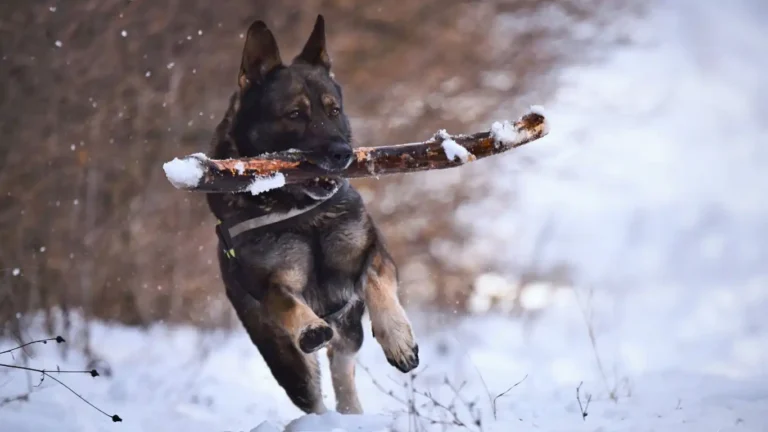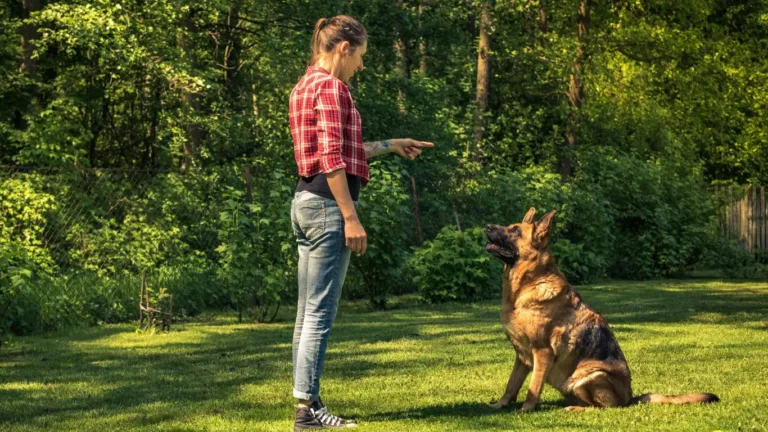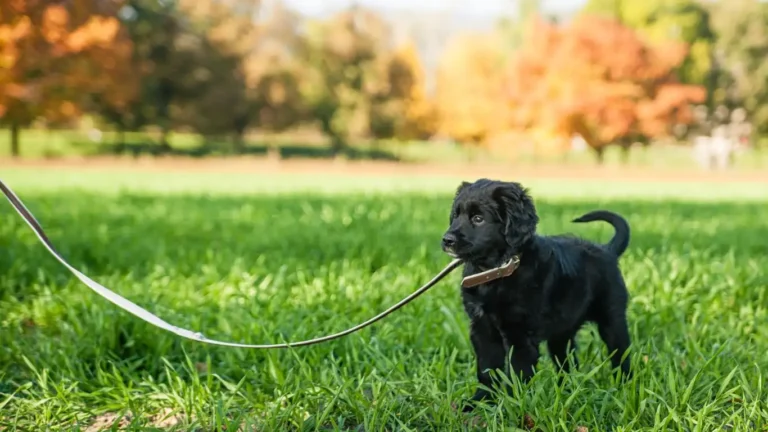Train Your Dog to Stay Calm During Thunderstorms – Proven Tips That Work
If you’ve ever had a dog glued to your leg, shaking like a leaf, or trying to wedge itself under the couch during a thunderstorm, you’re not alone. One of the most common concerns I hear from pet parents in my work as a Canine-Assisted Therapy Trainer is this: how to train a dog to be calm during thunderstorms. Storm phobia in dogs is real—and it’s heartbreaking to watch. I’ve seen even the most confident therapy dogs melt into a puddle of fear at the first rumble of thunder. But here’s the good news: you can help your dog feel safer and more secure during storms, and I’m here to walk you through how.
Why Dogs Fear Thunderstorms
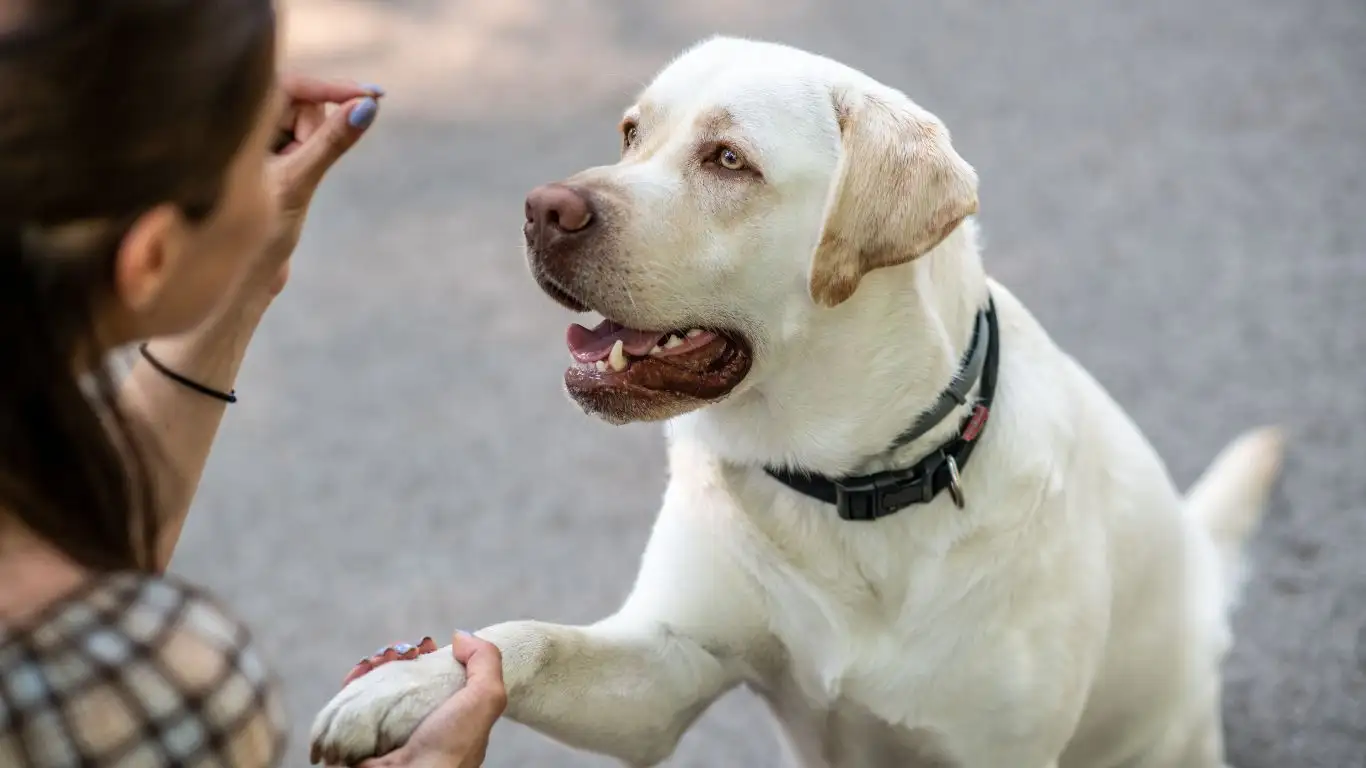
Let’s start with the “why.” Understanding your pup’s fear is half the battle. Thunderstorms don’t just bring noise—they bring a whole sensory overload. Lightning flashes, low-frequency rumbles, changes in air pressure, static electricity… it’s like a horror movie for some dogs.
In my experience, it’s not always about the volume of the thunder either. I’ve worked with dogs who would start trembling when the clouds got dark or the wind shifted—long before any boom happened. Some theories even suggest dogs can feel the buildup of static electricity in their fur. That means they’re getting zapped with microshocks just from walking around. No wonder they’re stressed.
Signs Your Dog is Scared of Storms
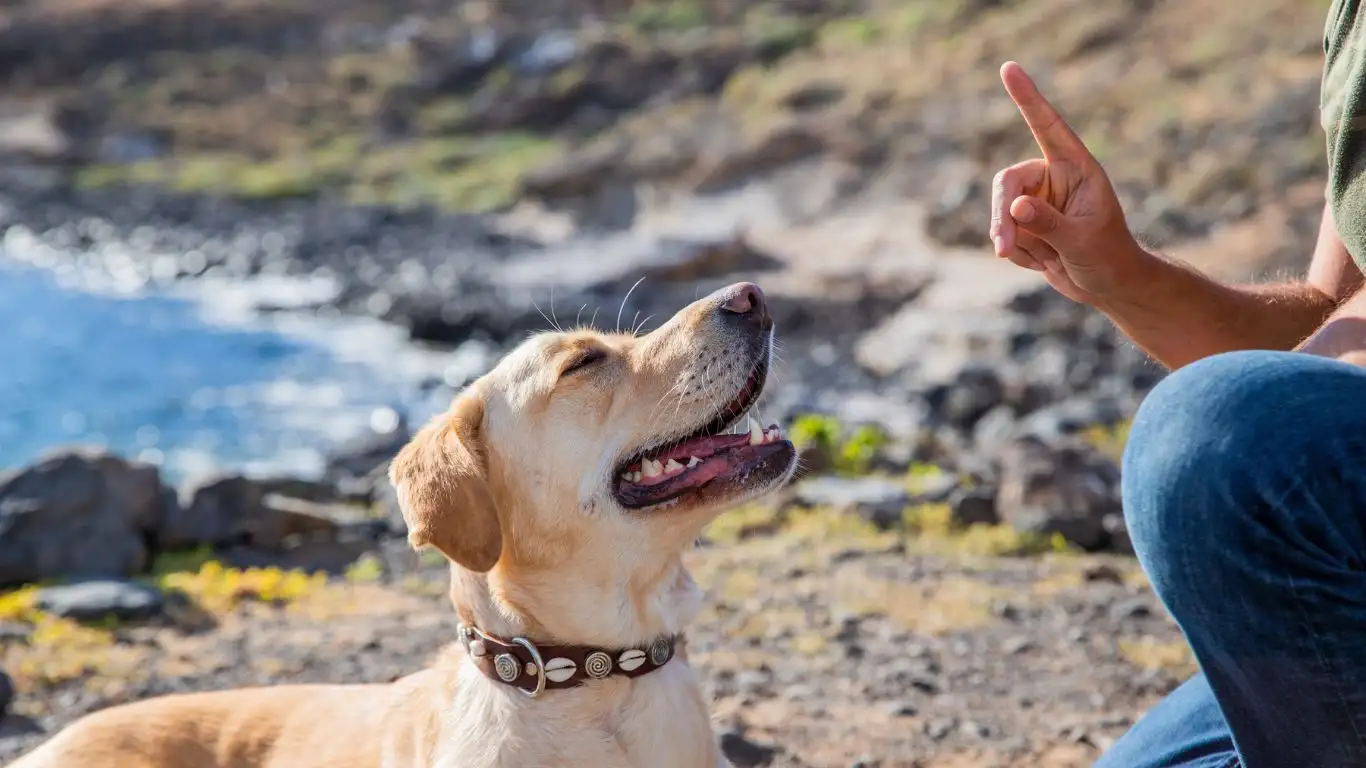
Fear can show up in subtle and not-so-subtle ways. I’ve seen some pups who try to be brave, but their body language gives them away. Others? They’ll straight-up panic. Here’s what to watch for:
- Pacing — Constant movement, like they can’t settle.
- Hiding — Under the bed, in the bathtub, behind furniture.
- Excessive panting — Even when the room is cool.
- Whining or barking — Often paired with clingy behavior.
- Shaking or trembling — One of the most visible signs.
- Destructive behavior — Scratching at doors, chewing, digging.
One of my past therapy dogs, a gentle Golden named Milo, would flatten himself under my coffee table and whimper like a puppy every time a storm rolled in. But with time, training, and a few tweaks to his environment, we helped him weather storms with far more grace (and way less stress).
How to Train a Dog to Be Calm During Thunderstorms
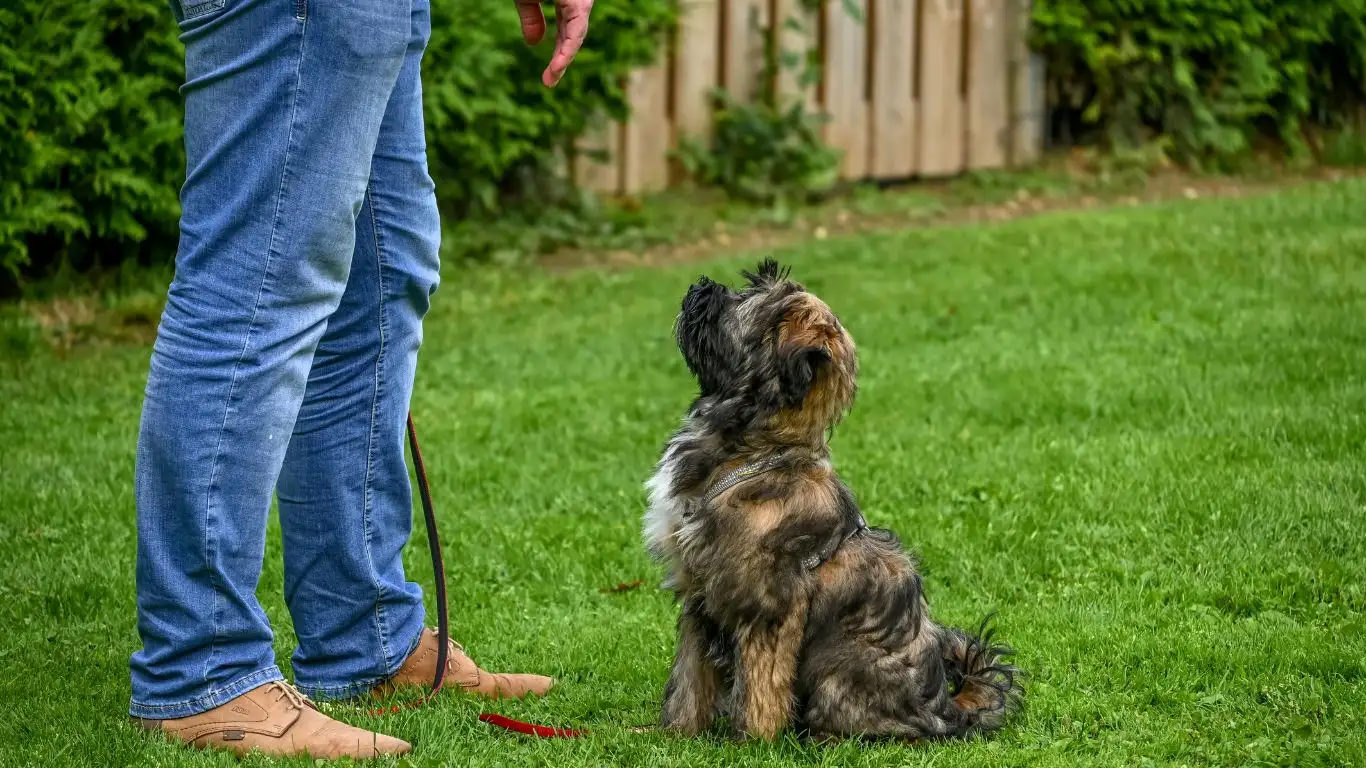
Now let’s get into the meat of it. Training your dog to be calm during thunderstorms isn’t about quick fixes—it’s about creating emotional safety, predictability, and building up their resilience over time. Here are strategies I’ve used with my own clients and therapy dogs:
1. Start with Desensitization (Before the Storm Hits)
Here’s where we lay the groundwork. If your dog’s already spiraling during the real deal, it’s hard to make progress in the moment. So what do we do? Practice when it’s sunny.
Play recordings of thunder at a low volume while engaging your dog in something positive—like playing tug, snacking on peanut butter, or doing simple tricks for treats. Gradually increase the volume over days or weeks. The goal is to disconnect the sound of thunder from fear.
I had a rescue pup named Daisy who used to bolt under the couch at the tiniest rumble. But by pairing low thunder sounds with freeze-dried liver treats and calm praise, we retrained her brain to associate the noise with something good.
2. Create a Safe Zone
Think of this like a doggy panic room—except cozy, not scary. Dogs feel safest when they have a den-like space that’s familiar and secure. You can set up a crate (if your dog is crate-trained), a closet with blankets, or a quiet corner with soft bedding.
- Add white noise or calming music to mask storm sounds.
- Cover windows to block lightning flashes.
- Try an anti-static jacket or shirt—some dogs swear by them!
Pro tip from the field: don’t force your dog into this space. Let them discover and choose it on their own. Dogs feel more in control when they make that decision themselves.
3. Try Calming Tools and Products
We’re talking all-natural calming chews, pheromone diffusers (Adaptil is a popular one), or even dog-appeasing sprays. I’m a big fan of holistic options, but you can also chat with your vet if things get intense. Some dogs may benefit from short-term anti-anxiety meds—especially if you’re dealing with severe storm phobia.
Also worth exploring:
- Thundershirts – Gentle pressure can be surprisingly soothing.
- CBD Oil – With vet guidance, some owners have seen great results.
- Rescue Remedy – A flower essence blend that’s been around forever.
Every dog’s different—what calms one might not work for another. The key is consistency and observation. I like to keep a little “storm toolkit” handy so I’m always prepared before the skies turn gray.
4. Stay Calm Yourself
This one’s harder than it sounds. Our dogs are masters at reading us, and if we tense up the moment thunder cracks, they’ll pick up on that. I always tell pet parents: be the calm you want your dog to feel.
Try not to fuss over them too much during the storm. It might seem comforting, but sometimes it reinforces the fear. Instead, act normal. Offer them their safe space, speak in a relaxed voice, and maybe even put on a show or game as a subtle distraction.
It’s amazing how a dog will mirror our energy—especially when they trust us deeply. That bond? It’s everything.
Advanced Conditioning Techniques for Thunderstorm Anxiety
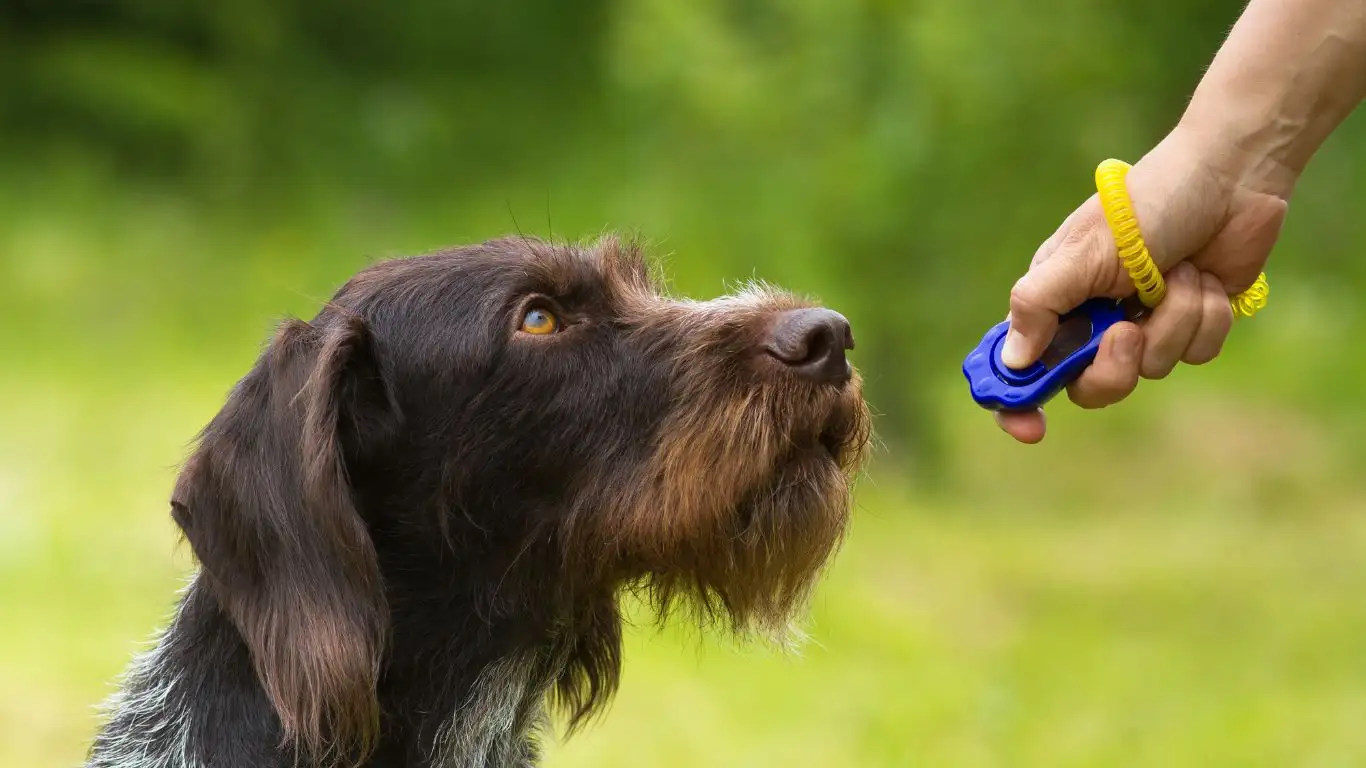
Once you’ve laid the foundation with desensitization and a cozy safe space, you can take things up a notch. I call this the “real world rehearsal.” It’s all about helping your dog generalize their calm behavior, even when there’s a bit more pressure.
1. Use Counter-Conditioning Like a Pro
This is where we flip the script. Instead of just dulling the fear response, we actively change your dog’s emotional association with the storm triggers. Every time thunder (even from a recording) rumbles, toss a treat. Not just any treat—a jackpot one. Think tiny pieces of roast chicken, string cheese, or whatever your dog goes nuts for.
What you’re doing here is classic Pavlov. Thunder = awesome surprise. Over time, your dog will hear that boom and look to you expecting good things. It works—I’ve used this method with dozens of therapy dogs in training, and the shift in their body language is undeniable.
2. Add Obedience as a Confidence Tool
One thing that’s often overlooked in training fearful dogs? The power of obedience as a grounding tool. When dogs are anxious, having a familiar cue to fall back on gives them structure and predictability.
Start working simple obedience skills like:
- Place – Teach your dog to settle on a mat or bed.
- Watch me – Eye contact can help them re-center.
- Touch – Nose targeting can redirect nervous energy.
Make it fun, short, and always reward-based. I had a super smart Border Collie client who went from full-blown panic mode to calmly offering a ‘down-stay’ during storms. Why? Because she had a job. And dogs love having jobs.
How Your Own Behavior Shapes the Outcome
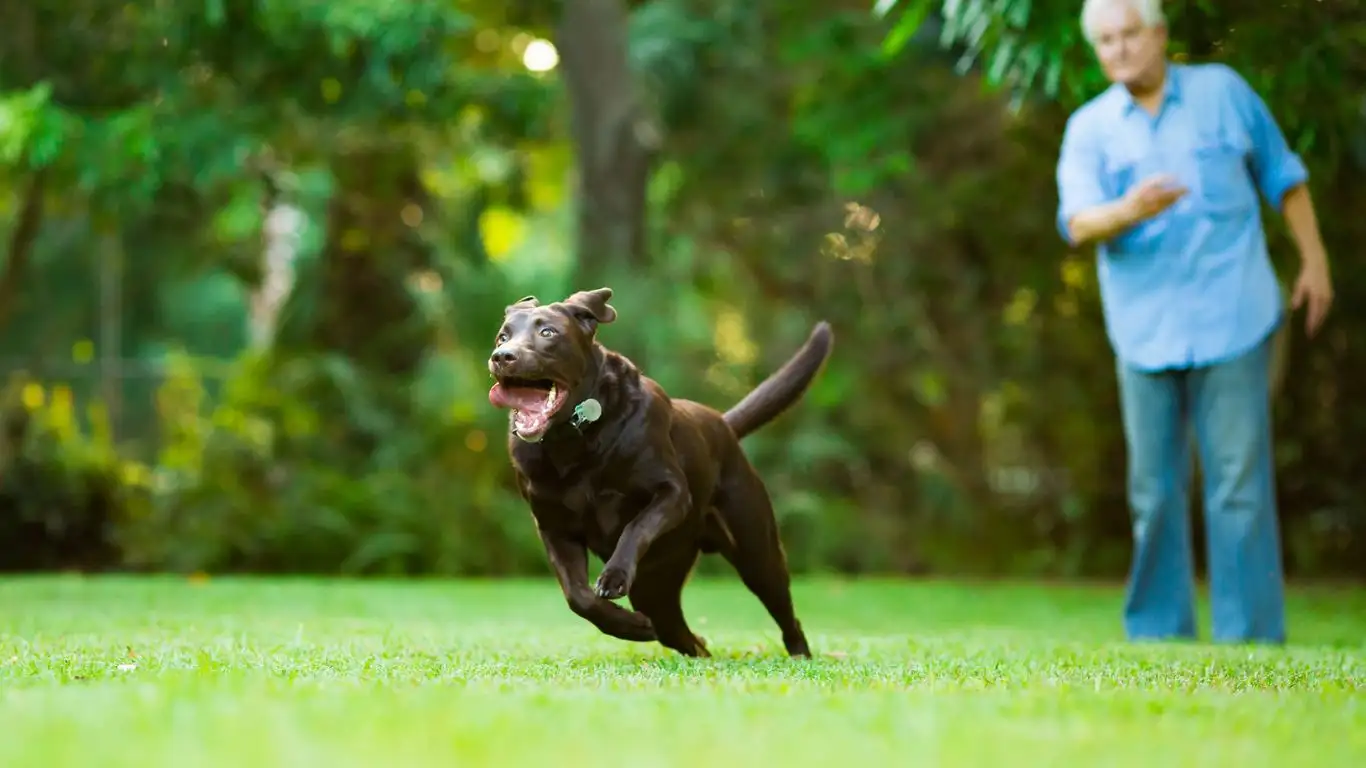
Here’s something I always bring up with my clients: your energy matters more than you think. I once had a young Labrador named Otis who picked up on his owner’s anxiety before a storm even began. The owner would start pacing, checking the forecast, fretting aloud—and Otis would mirror all that tension.
So what’s the fix? It’s not about pretending the storm isn’t happening, but about modeling calm. Take a deep breath. Speak in your usual tone. Move slowly. If your dog sees you staying relaxed, it gives them silent permission to do the same. It may not erase the fear, but it can take the edge off.
Even the simple act of playing soft music, keeping the lights steady, and going about your evening routine like it’s no big deal can send the right signals. I like to cue up some jazz or ambient nature sounds—it’s soothing for both ends of the leash.
Storm Prep: Routine Before the Rumble
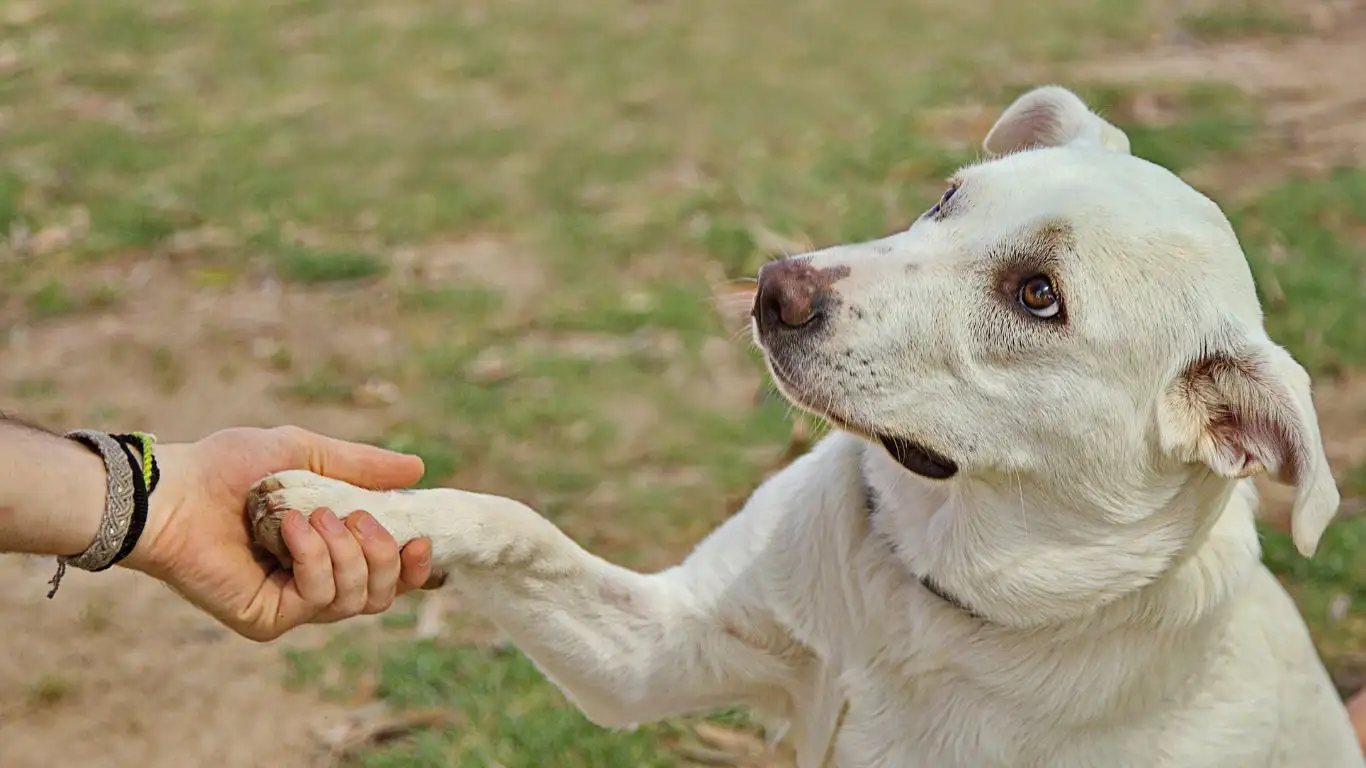
Creating a pre-storm routine can work wonders. Dogs thrive on predictability, and if they know what to expect when the sky darkens, it helps reduce the fear of the unknown. Here’s what I typically recommend to my training clients:
- Potty break early – Get them outside before it gets wild.
- Offer a high-value chew or puzzle toy – Keeps their brain busy.
- Turn on your white noise or calming playlist – Drown out the scary stuff.
- Close windows and curtains – Block out lightning and sound echoes.
- Diffuse calming pheromones – Start before the storm peaks for max effect.
Honestly, half of training is environmental management. You can’t control the weather, but you can control the environment your dog experiences it in.
Training Through Storm Season
If you live somewhere stormy—like my clients in Florida and Texas—thunder season isn’t just an occasional event. It’s a lifestyle. In those cases, we make storm training a regular part of the routine. Every few days, we’ll rehearse our calming protocol, even on blue-sky days.
This is a great time to reinforce:
- Place training with longer durations
- Relaxation protocols (like the one by Dr. Karen Overall)
- Noise training with curated thunderstorm soundtracks
It’s not always fast, and sometimes we hit setbacks—especially after a particularly loud storm. But with patience and consistency, I’ve seen dogs go from trembling wrecks to chilled-out nap machines, even when the thunder rolls.
When to Seek Professional Help
I’m all about DIY training when it’s safe and effective, but sometimes, a little extra help is exactly what’s needed. If your dog’s reaction is extreme—like trying to escape through windows, harming themselves, or showing signs of serious panic—it’s time to call in a professional.
Look for a certified behavior consultant or veterinary behaviorist. They can help tailor a plan that might include medication, deeper behavioral work, or both. I’ve partnered with vets and behaviorists when working with dogs whose fear goes beyond what training alone can fix—and the outcomes have been amazing.
Also, don’t wait until the next storm rolls in. The best time to get ahead of storm anxiety is before it becomes full-blown phobia. I’ve had several pet parents thank me after finally taking that first step, saying, “I wish we’d started sooner.”
Real Talk: Progress Isn’t Linear
I’ll be honest—this isn’t always a straight road. Sometimes your dog will crush it during one storm and fall apart during the next. That doesn’t mean you’ve failed. It just means they’re still learning to trust their environment—and you.
One of the therapy pups I trained, a German Shepherd named Echo, took nearly six months before he stopped pacing during storms. But when he finally curled up during a storm and calmly chewed a bone for the first time, his owner cried. It was a huge win—and it made every training session worth it.
Alternative Calming Methods You Can Add to Training
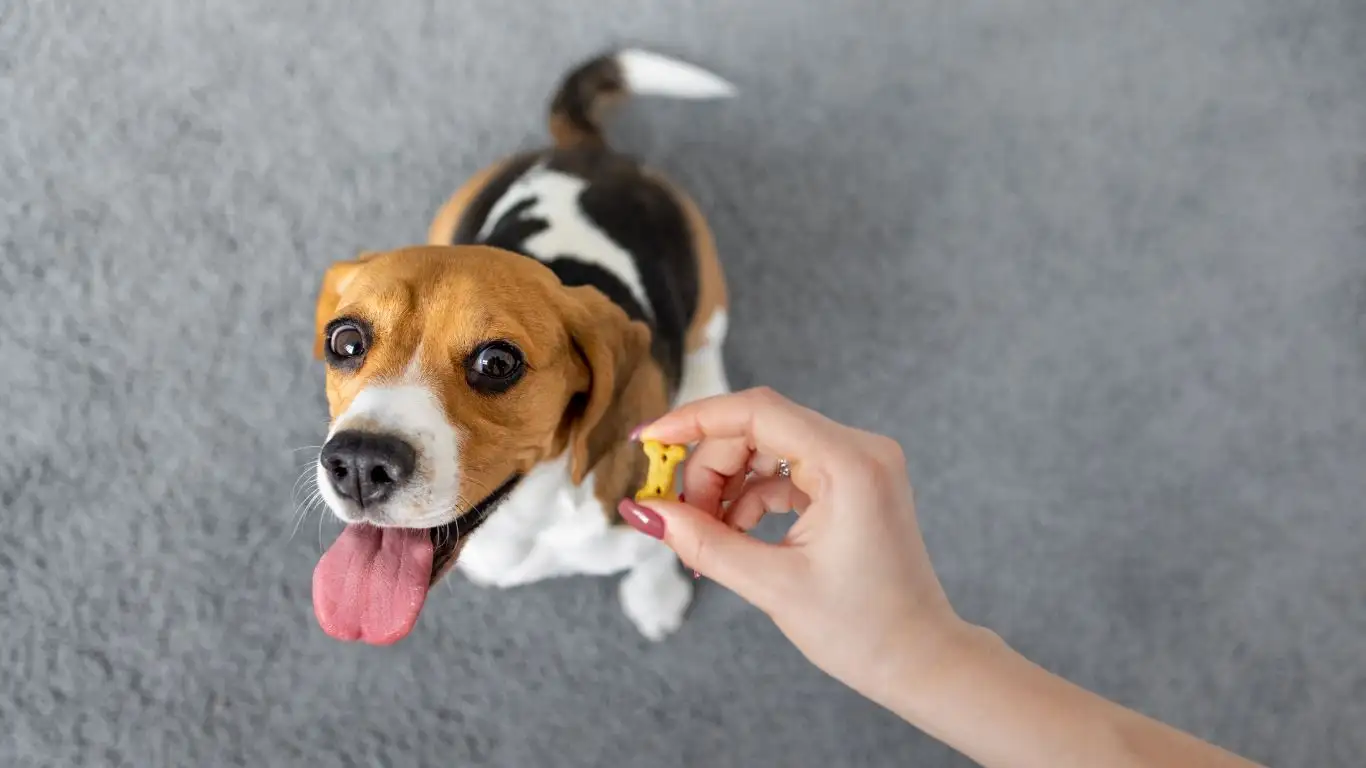
Sometimes, training alone just isn’t enough—especially for dogs with deeper-rooted thunderstorm phobias. Over the years, I’ve learned that layering alternative calming aids alongside behavioral training can make a real difference. It’s about building a full toolbox—not just relying on one fix.
Natural Calming Products
There are several over-the-counter products designed to ease canine anxiety. Now, I’m not saying these work for every dog, but I’ve seen them help plenty of my clients as part of a broader strategy. Here are a few that come up often in my sessions:
- Adaptil diffusers or collars – Synthetic pheromones that mimic a nursing mother’s calming scent. Great to have running before and during a storm.
- CBD oil (veterinarian approved) – Some pet parents report significant anxiety relief, but always consult your vet first. Quality and dosage vary.
- Thundershirts – Compression vests that simulate swaddling. I’ve had a few clients call them “game changers,” though it depends on the dog’s comfort with clothing.
- Calming chews with ingredients like L-theanine or chamomile – Mild, but often helpful in combination with training.
I worked with one Golden Retriever named Benny who used to shake so hard during storms that his tags would rattle. We combined a pheromone collar, a calming music playlist, and our regular desensitization training. Within a few months, Benny was snoring peacefully through the same storms that once sent him under the bed.
Massage and Touch Therapy
Touch can be powerful. A gentle massage along your dog’s spine or ears can help lower their heart rate and trigger a relaxation response. I always remind owners to keep their touch slow and consistent—no fast rubbing or overly excited petting. That’ll just wind them up more.
Try this during a mild thunderstorm or a practice session with a storm soundtrack. Sit beside your dog, speak softly, and run your hands down their back with long, even strokes. You’d be surprised how many dogs melt into the floor when they realize you’re right there with them, calm and in control.
Using Technology to Your Advantage

Tech isn’t just for humans—there’s a lot of gear out there that can help your pup ride out the storm with less stress. Here are a few tech-based strategies I often recommend:
- White noise machines or smart speakers – Play ambient sounds or storm-canceling noise. One client even uses ocean waves as a “cover track.”
- Thunder simulation apps – For gradual exposure therapy. You control volume and duration.
- Pet cameras with two-way audio – Helpful for dogs who struggle with separation anxiety and storms. You can talk to them and even drop a treat remotely.
One of my clients actually built a playlist of jazz, ambient rain (ironically), and instrumental harp music. They start it every time the weather shifts. Their dog now associates that playlist with relaxation—even more than the storm itself.
Consistency: Your Dog’s Best Friend
If there’s one golden rule in all this, it’s consistency. Dogs don’t generalize well. Just because your dog was calm last Tuesday doesn’t mean they’ll be chill next Thursday unless you keep at it. Stick with the plan, even when progress feels slow.
Remember Echo from earlier? That German Shepherd who used to panic during every storm? His owners stuck to their protocol even after a few backslides. They kept logging his progress, adjusting his safe space, and rewarding every small win. Today, he’s calm enough to sit through thunderstorms while the TV’s on—and that’s a huge success in my book.
Keep a Storm Journal
Yep, a storm journal. It might sound extra, but it’s a great way to track patterns. Note the date, your dog’s behavior, what worked, and what didn’t. Over time, you’ll see trends—and you’ll know when it’s time to tweak your approach.
- Did the pheromone diffuser help more on humid days?
- Was your dog calmer when you started the calming playlist early?
- Which treats did they accept even when nervous?
Having that data helps you make smart, informed decisions—and it gives your trainer or vet solid insight if you need help down the road.
Helpful Resources & Further Reading
If you’re diving deeper into storm-related anxiety in dogs, here are a few reputable places to check out:
- PetMD – Great articles on anxiety, behavior, and natural calming aids.
- AKC – Offers solid training resources and breed-specific insights.
- Health.com – For articles on human-dog bonding and emotional wellbeing.
- NIH – If you’re curious about studies around canine stress and behavior science.
Disclaimer
The information in this article is based on personal experience as a Canine-Assisted Therapy Trainer and is intended for educational purposes only. Always consult with a qualified veterinarian or certified behaviorist before starting any anxiety treatment plan or introducing new supplements or medications.
